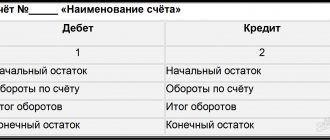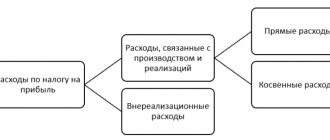It is impossible to imagine a modern oil company without an established accounting system for the wholesale and retail trade of fuels and lubricants. However, in addition to working for their main purpose (trade of fuels and lubricants), many of the companies that own oil storage tanks and a network of gas stations develop related activities on them - shops, cafes, car washes and car services. At the same time, a number of problems arise with the provision of accounting and, above all, management accounting. In addition, another problem is the territorial remoteness of filling stations or filling stations. For example, the office from which management is carried out is located in the city, and the network of gas stations is “scattered” in a suburban area.
To automate the operational accounting of wholesale and retail trade of fuels and lubricants, taking into account possible related activities, the Moscow company has developed the “1C-Rarus: Gas Station + Oil Depot” configuration, intended for use in the “1C: Enterprise” program system.
This software product is a comprehensive multifunctional system for managing a trading enterprise, including oil storage facilities, gas stations (gas stations) and gas filling complexes (filling complexes), as well as shops, car service centers and public catering outlets with commercial equipment.
The “1C-Rarus: Gas Station + Oil Depot” configuration allows you to combine the workplaces of management personnel and operators into a single information system and is intended for organizational leaders, accountants, sales managers, economists, analysts, and storekeepers.
The configuration implements double quantitative accounting of fuels and lubricants - by mass and by volume. It is possible to select the method of writing off goods and fuels and lubricants - FIFO, LIFO or “average”.
Document flow for transportation of oil and products
Delivery of petroleum products is carried out by road, sea, rail, and pumping through pipelines. The predominant method of delivery within the country to gas stations is by road. Acceptance of petroleum products for registration is carried out by pumping them into tanks from the carrier’s tanks.
Peculiarities of document flow during delivery by motor transport when accepting petroleum products for registration:
- If the quantity data corresponds to the accompanying documents, a mark of acceptance is made in the TTN. One copy remains at the gas station, three forms are handed over to the carrier. Read also the article: → “Consignment note (Bill of Lading). Form and example of filling out form 1-T.”
- If a discrepancy between the actual and specified data is detected, a report is drawn up, and a note about the deficiency is entered into the TTN. The act is drawn up in the amount of 3 documents for transmission to the station’s accounting department, filing with the shift report, and provision of products to the carrier.
The receipt of petroleum products through a pipeline or from a tank is accompanied by simultaneous measuring measures. A sample is taken from the settling tanks, the data of which is stored until the next injection. The quality structure, temperature parameters, and level of products in the tank are subject to verification before and after injection. At the end of the procedure for transported products, the tank is sealed, an acceptance certificate is drawn up, one copy of which is transferred to the accounting department, the second is attached to the shift report.
The assortment of gas stations includes piece goods supplied in small containers - oils, additives and others. Upon receipt, a check is made to ensure that the quantity of goods corresponds to the data specified in the invoice, which is recorded in the book of accounting for the movement of packaged goods. A separate logbook opens for each group.
The procedure for transferring shifts and compiling shift reports
At the moment of accepting/transferring a shift, both gas station operators (both the one transferring the shift and the one receiving it) together perform the following actions:
- take total readings from all meters of the metering station and all meters of dispensers and MRKs;
- jointly measure the volume of petroleum products sold during a shift (the volume indicator is determined using calibration tables after measuring the level of petroleum products residues);
- using the obtained volume and density values, as well as after measuring the temperature, the quantitative value of the mass of residues in each gas station tank is calculated;
- the balance of money and coupons, as well as other material assets, is transferred;
- carry out error monitoring at each fuel dispenser/MRK.
At the moment of shift handover, operators prepare a shift report. The report form is either number 25-NP, described in the Instructions, or an internal form that was developed in a specific organization on the basis of this document.
In addition to the basic indicators provided for in Form 25-NP, it is advisable to include in the shift report the results of temperature and density measurements taken during the shift.
This report also records the shortage or, conversely, surplus of petroleum products per shift, which are determined as the difference between the readings given by the dispenser meters (metering unit) and the data obtained by measuring the remaining petroleum products in the gas station tanks at the time of shift transfer.
The surplus/shortage of NP is indicated in weight units, taking into account the errors of the TRK/MRK measuring instruments, and is accepted by the enterprise accounting department for accounting for each individual shift. This accounting is maintained in the control and accumulative sheet during the entire interval between inventories. At the time of inventory, all such deviations are calculated in the total quantity for the entire inter-inventory period.
Every month, the accounting department of the enterprise generates a balance sheet reflecting the movement of NP in units of mass, divided according to the following criteria:
- brands of petroleum products;
- ownership of them (own or provided for storage by bailors).
Retail and wholesale in gas station trading activities
Gas stations operate with wholesale and retail customers. The conditions for document flow of activities differ.
| Condition | Wholesale trade | Retail holiday |
| Agreement | Mandatory document drawn up for a long period of time | The form of a retail trade agreement is a check |
| Consumers | Organizations or individual entrepreneurs | Individuals |
| Documentary proof of shipment | Vacations are made using fuel cards, and an invoice is issued at the end of the month | Data on the issue are indicated in the KKM receipt issued at the time of shipment |
| Invoice | One document is issued based on the results of the month for all shipments (when maintaining OSNO at gas stations) | Not issued |
Enterprises can purchase fuel without concluding permanent contracts. The purchase of petroleum products is carried out through the company’s accountable persons. Cash receipts are confirmation of leave and are used for taxation of activities as part of the costs of operating transport.
The difference between wholesale and retail is the purpose of the fuel used for resale or for the needs of enterprises and individuals.
Application of taxation systems in accounting
Enterprises trading through gas stations have the right to use the generally established or simplified taxation regime. UTII is not used in accounting due to the absence of the type of activity in the list established for the regime. The system does not apply to the trade of non-excise goods.
| Position | BASIC | simplified tax system |
| Production and sale of excisable goods | Applicable | Not applicable |
| Sales of excisable goods without production | Applicable | Applicable |
| Number limit | Absent | 100 people, determined by the entire headcount of the enterprise |
| The amount of fixed assets balance | No limits | 150 million rubles |
| Amount of income received | No limits | The limit value is established by Art. 346.12 Tax Code of the Russian Federation. The amount is subject to annual indexation |
| Installed | Default | By submitting a notification to the territorial office of the Federal Tax Service |
| Transition | Upon organization, from the beginning of the calendar year or upon loss of the right to a simplified regime | Upon organization or from the beginning of the calendar year |
Vacation in cash is carried out using cash register equipment, regardless of the mode used. The technique is used both in settlements with the population and when receiving payments from organizations. Read also: → Using online cash registers for gas stations in 2021
Fuel consumption standards for general purpose vehicles
Fuel consumption standards are set for each model and brand separately. For calculations, you can use average formulas. Fuel and lubricants consumption standards consist of fuel consumption to carry out transport operations and processes at the enterprise.
Cars
To calculate the standard consumption value, you must use the formula: Explanation: Qn – standard fuel consumption, which is calculated in liters; Hs – basic consumption for a run of 100 km; S is the total mileage of the vehicle, which is calculated in km; D is a correction factor that is equated to the norm (calculations are carried out as a percentage).
Passenger cars, domestic and CIS countries
The following standards are established by current legislation:
Foreign cars
Buses
To calculate fuel consumption for buses, you must use the following formula: Explanation: Qn – standard fuel consumption in liters; Hs – standard fuel consumption for buses for a run of 100 km (the load, the number of passengers, and the norm by class must be taken into account); S – total mileage of the bus in km; Note – fuel consumption rate if standard independent heaters are used; T – the total duration of operation of the vehicle when the heater is on; D – correction factor (when performing calculations, it is necessary to sum up the relative increase or decrease) to the normal indicator.
Buses domestic and CIS countries
Below is an example of average indicators according to the law. To obtain more accurate calculations, it is recommended to perform the calculations yourself.
Foreign buses
Flatbed cargo vehicles
Enterprises that have flatbed trucks or road trains at their disposal must also calculate the optimal standard value for consumption. For this purpose, the following formula is provided: Detailed explanation of the indicators: Qh – standard fuel consumption in liters; S – total mileage of a truck or road train (calculated in km); Hsan is the consumption rate, which corresponds to the vehicle’s mileage when it moves without a load; D – correction factor, which is as close as possible to the normal value (the parameter is calculated as a percentage); Hw – standard parameter of fuel consumption, taking into account the vehicle’s transport operation at the enterprise; W – volume of transport work, taking into account the weight of the cargo and mileage when loaded. If an enterprise uses flatbed vehicles or road trains to transport large cargo, it is necessary to increase the fuel consumption rate. It is important to consider the type of fuel. If the car is refueled with gasoline, an additional 2 liters are added to the obtained value. For diesel fuel, it is optimal to add 1.3 liters of fuel. This is the main requirement of the Ministry of Transport of the Russian Federation. The law came into force in 2015, so every organization is required to comply with the prescribed requirements.
Flatbed trucks, domestic and CIS countries
Foreign flatbed trucks
Tractors
The standard value of fuel consumption for tractors is calculated using a similar formula as for onboard cargo vehicles and road trains.
Tractor units, domestic and CIS countries
Foreign tractors
Dump trucks
For dump trucks, the standard value is calculated using an extended formula: Detailed explanation: Qh – standard fuel consumption in liters; S – mileage of motor vehicles – dump truck; Hsanc – established norm; Hz – additional rate, which is calculated for each trip separately in liters; Z – the total total number of trips of a dump truck with cargo that are completed during the day; D – average value in the form of a correction factor according to the standard. In order to calculate the rate as accurately as possible, it is necessary to additionally add fuel for maneuvering. Dump trucks are large, so consumption increases at the unloading and loading points. This requirement is established by the legislation of the Russian Federation.
Dump trucks, domestic and CIS countries
Foreign dump trucks
Vans
To calculate the rate for vans, use the formula that is used for flatbed trucks. If vans operate under heavy load and transport cargo, it is necessary to add up to 10% to the calculated base rate.
Vans, domestic and CIS countries
Foreign vans
Medical vehicles
To calculate the fuel refueling rate for medical vehicles, you must be guided by the letter of the Ministry of Justice of the Russian Federation. The law was adopted on September 21, 2009 No. 03-2609. It provides guidelines for the correct operation of medical vehicles.
Medical vehicles, domestic and CIS countries
Below are examples of established standards for medical vehicles of domestic production and CIS countries:
Foreign medical vehicles
Tow trucks
To calculate the norm, you must be guided by the order of the Ministry of Transport of the Russian Federation. The law was adopted on March 14, 2008 No. AM-23-r. Revision and changes were made on September 20, 2021. The name of the law is “On the implementation of methodological recommendations “Fuel consumption standards and the use of lubricants in road transport.” Below are the exact figures for the basic fuel rate per 100 km for tow trucks used for commercial purposes:
Fuel consumption standards for special specialized vehicles
Enterprises and organizations may operate special vehicles with specialized equipment installed. These vehicles are classified into two main groups: 1. Vehicles that perform work in an immobilized state, while parked. This category includes truck cranes, tanks, compressor units, and drilling structures. 2. Vehicles that are intended for construction, repair, and other work. This category includes vehicle towers, cable layers, concrete mixers. In order to correctly and with maximum accuracy determine the standard fuel consumption, it is necessary to use a special formula. It is used for cars that are parked: Detailed explanation: Hsc – standard fuel consumption according to mileage; S – mileage of a specialized vehicle to his place of work (the journey in the opposite direction must be taken into account); Ht is the standard fuel consumption required to ensure the functioning of special equipment (this includes filling a car tank); T – period or time during which the equipment operates (for calculation, you can use the number of operations that were successfully completed); D – premium, which is determined in total in relation to the norm as a percentage (this may be the operation of special equipment in the winter, when the cost of heating the cabin increases).
Taxation and tax reporting of gas station enterprises
Organizations or individual entrepreneurs operating gas stations are required to submit reports on taxes determined by the chosen taxation system.
| Type of tax of a legal entity | BASIC | simplified tax system |
| Basic tax | Income tax | Single tax calculated on income or the difference between income and expenses |
| Excise taxes | Depending on the occurrence of the obligation | |
| Property tax | Paid | There is no obligation, except for taxation of objects determined by cadastral value |
| Land tax | Paid | Paid |
| VAT | Paid | No obligation |
Enterprises of both types of systems pay insurance contributions to funds accrued for the remuneration of employees. For companies registered as individual entrepreneurs, there is an obligation to pay contributions to the entrepreneur himself.
Calculation of excise duty for different types of rates
Excise duty is paid in cases where excisable products produced by one’s own enterprise, obtained by a court decision or during operations for processing straight-run gasoline, are sold through a gas station (see → excise taxes on gasoline in 2021)
When calculating the amount of tax, different types of rates are used - fixed, set based on the volume, ad valorem in the form of a percentage of the cost of products sold, and combined, combining both calculation options. The tax amount is calculated as the product of the base and the rate. Each type of excisable product is calculated separately.
An example of the use of excise taxes in the cost of fuel
A gas station enterprise, which has the right to carry out retail trade on the simplified tax system, received for sale petroleum products of its own production in the amount of 190,000 rubles, the excise tax on which is 25,000 rubles. The trade margin is set at 10%. The following entries are made in gas station accounting:
- The formation of the cost of products is reflected: Dt 41 Kt 20(25, 26) in the amount of 190,000 rubles;
- The trade margin was accrued: Dt 41 Kt 42 in the amount of 19,000 rubles;
- The cost of excise taxes is taken into account: Dt 41 Kt 68 in the amount of 25,000 rubles;
- The transfer of the excise tax amount to the budget after the sale is reflected: Dt 68 Kt 51 for the amount received in the period.
From the amount of cost written off when selling products, markup and excise tax are excluded. When determining the cost, the balance of production at the end of the month is taken into account.
Features of the sale of petroleum products to buyers without certificates
The excise tax paid at the time of receipt of petroleum products, in the case of their sale to persons without certificates (including retail sales at gas stations), is included in the price of the NP. At the same time, the excise tax amount does not appear separately on the price tags or on the labels of the goods sold, as well as on receipts or other documents issued to the final buyer.
All this makes the sale of petroleum products to persons without certificates economically unprofitable, since the taxpayer is forced to increase his revenue by the amount of excise tax, and this increases the base for calculating value added tax.
Enterprise tax reporting
Enterprises submit reports on taxes determined by the accounting regime. If it is necessary to pay excise taxes, enterprises submit a declaration monthly, before the 25th day after the expiration of the tax period in which the obligation arose. The deadlines are determined depending on the obligation:
- Sales of products produced by our own enterprise - until the 25th of the next month.
- Sales of products obtained from operations with straight-run gasoline - until the 25th of the third month.
- Excise tax reporting is submitted at the place of origin of the tax base.
Inventory at gas stations: frequency and timing
Carrying out an inventory is a planned control event at gas stations, carried out at least once a month. Unscheduled inspections are prescribed in cases of a change in the financially responsible person, detection of theft, and in the event of force majeure circumstances. On the timing of the inventory, an order of form No. 29-NP is issued, which is registered in the accounting book. Enterprises are required to publish a document regulating the procedure for conducting inspections.
Features of inventory:
- The inspection is carried out by a permanent commission, the duties and rights of which are fixed by order.
- All available petroleum products in tanks, barrels, and small containers are subject to inspection.
- As a control measure, the amount of money in the cash register and the coupons used during the shift are calculated.
- When calculating inventory items, the norms of natural loss determined by Decree of the USSR State Supply Committee dated March 26, 1986 No. 40 and ministry orders are taken into account.
Based on the results of the control procedure, an inventory list, a comparison sheet and an inspection report are drawn up. If a shortage or misgrading is identified, the persons responsible for accounting operations must provide explanatory notes.
Procedure for dispensing petroleum products at gas stations
The dispensing of petroleum products at gas stations can only be carried out through fuel dispensers (TRK) or oil dispensers (MRK), and only into the tank of the vehicle.
The total weight of all petroleum products dispensed during one shift at a gas station is calculated using the formula:
M=P x V,
where M is the total mass of petroleum products supplied per shift;
V is the volume of NPs issued per shift, according to the data of the counting mechanisms at the metering stations;
P – NP density measured at temperature at the time of shift transfer.








